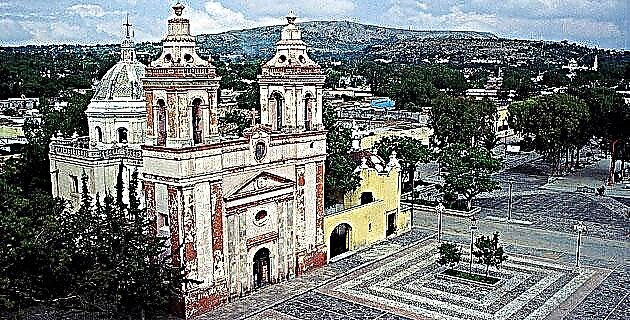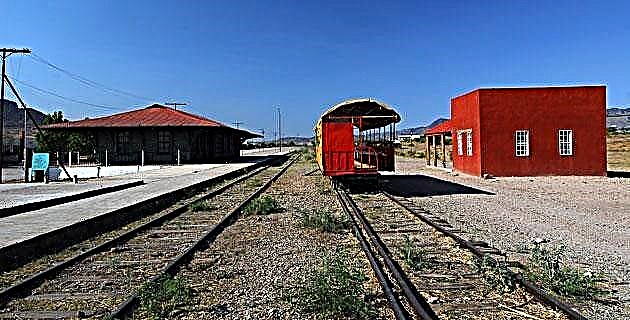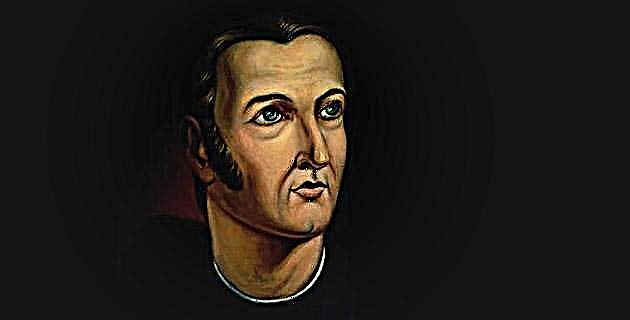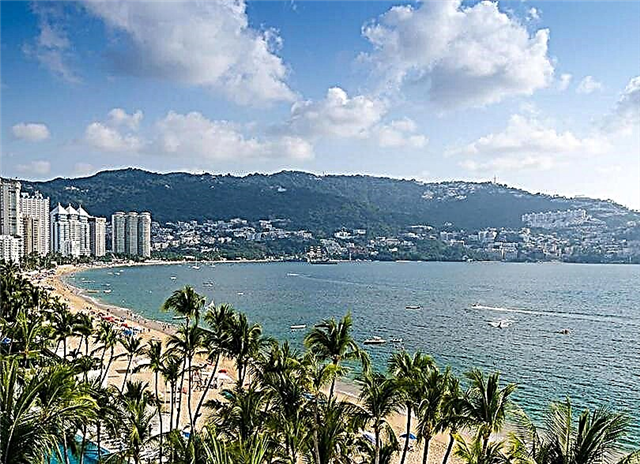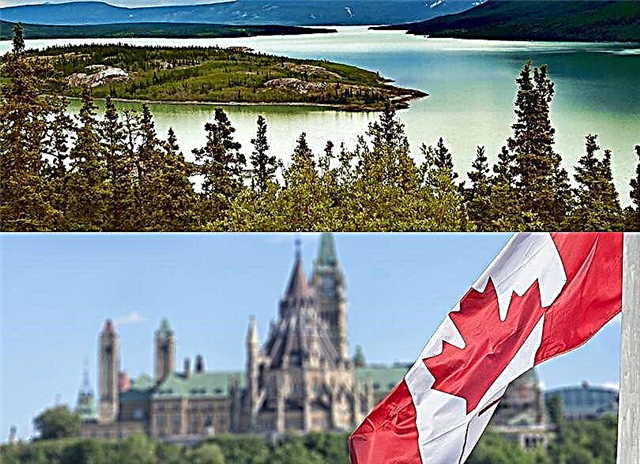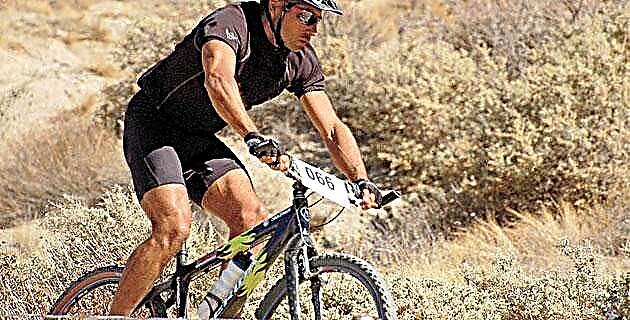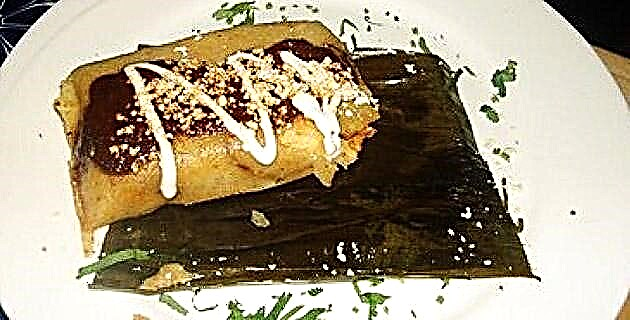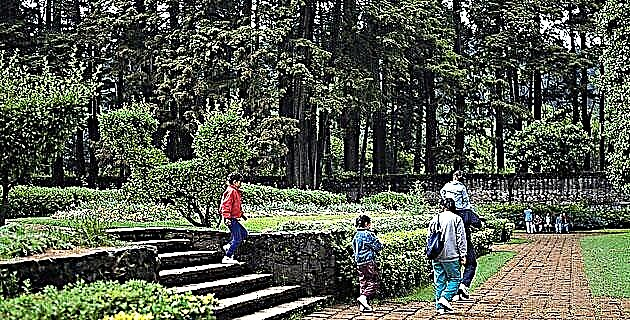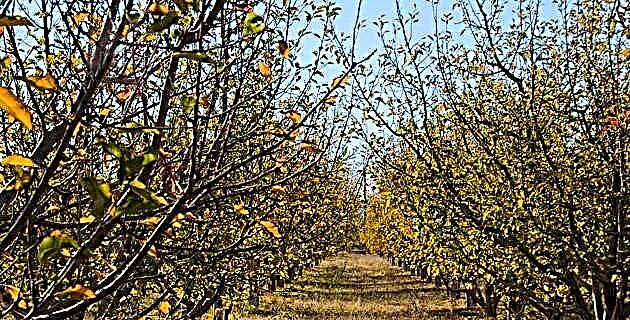
When we left for Ciudad Cuauhtémoc, in Chihuahua, I did not imagine the landscape that would soon be before us.
I had visited Mennonite camps many years ago and indeed what I found now was surprising in every way. The apple, perhaps one of the oldest fruits in memory, the apple of contention in the Old Testament and the main reason why Adam and Eve were expelled from Paradise, has become a symbol throughout the region that Its main center is Ciudad Cuauhtémoc, due to the economic importance of its cultivation, which extends over thousands of hectares and reaches surprising figures in millions of trees in full production and of course in thousands of tons of fruit.
The packer
Very soon the figures would appear turned into golden apples, which sail over a water channel to receive a final bath and then go through a rigorous selection that separates them by color and size, almost by magic, without hurting themselves. The engineer who accompanies us gives us all the details related to refrigeration, packaging, storage, distribution, talks about thousands of tons, talks about the La Norteñita packinghouse, considered among the most modern in the world, which produces its own apples at starting from the planting of still young trees that will grow to live more than a hundred years and will bear fruit with the help of God and science: natural compost, controlled irrigation with humidity sensors and heaters to counteract frost.
It is a spectacle, says Verónica Pérez, our guide - promoter of tourism in the region - when the temperature drops, to see the brigades of workers in the middle of the night turn on the heaters to protect the fruit trees thanks to the infinite meshes that they cover them, they have been saved from the effect of hail.
Walking in the apple orchards, seeing the fruits that a week ago were still flowers, is comforting. Very soon the Rrámuris hands will detach them from the tree, according to those who know, no one like them to harvest the apple.
With the sun already up and around one in the afternoon we headed to Guerrero City to visit the Papigochi mission. It is almost impossible before retiring to resist the idea of walking through the corridors of the orchards. There is a geometric magnet that catches you, it is to a certain extent an entrance to the field of infinity. Once you find yourself in the middle of an apple orchard, you lose the idea of the real world and enter the world of apples.
Road to Papigochi
Only a few minutes and we arrived in Ciudad Guerrero to fulfill an invitation that Francisco Cabrera and Alma Casabantes, the owners of La Cava restaurant, had made us. They were already waiting for us with a succulent menu that opened with a salad that gave way to a stew in the first stage, and then tasted a second time with regional meats and closed with an apple pie unmatched in all known territory. We say goodbye to those beautiful people who did not want to let us go without us seeing how they were restoring an old house of their property that, like others, shows its façade renovated since Ciudad Guerrero is a candidate to be recognized as a magical town.
After visiting the Papigochi mission, we left for the Santo Tomás mission, which in its time appeared lost in the middle of an immense territory inhabited only by its founders, the Jesuit fathers Tardá, Guadalajara, Celada, Tarkay and Neuman. The mission, like all those in the northern world, awaits us with the tranquility that comes from being there since 1649 and having witnessed the war against the Indians of the region, evangelization, the return of the Apaches and the bonanza of a region that diversified its production from 1922 when the Mennonites arrived in the fields of Cuauhtémoc and Álvaro Obregón to distribute ejidal lands.
An 11-year-old boy opened the door for us with a perhaps century-old key, we admired first of all the gentleness with which our little guide explained some details of the enclosure and guided us to a room on one side of the presbytery to show us some ornate oil paintings on the walls. Everything was in order, but above all, his soul.
En route to Cusi
Verónica suggested that we visit Cusihuiriachi and Carichí. We went first to Cusi, as they say here to this ancient town, which is now trying to recover its image because a company is trying to put the old mineral back into operation.
Mariano Paredes, secretary of the municipal president, showed us the mission that is in full restoration, in the choir, to which we climbed with great difficulty by a staircase almost without inclination, we admired a beautiful coffered ceiling. The site is again visited by the faithful, miners who have returned with their families. Cusi is still interesting if you have the spirit to look for details in semi-ruined houses, imagining that at one point they were palaces built on silver veins.
Departure for Carichí
And from Cusi we started for Carichí, a few kilometers ahead in a westerly direction an extraordinary landscape of blues, greens, ocher and oranges opened up before us. Immense fields of crops and cattle in the middle of a transparent air cut out by clouds that mimicked the crest of processional crosses. Upon reaching Carichí, we found the mission completely restored in the heart of the town. We couldn't get in. In our surroundings schools with basketball courts, a gym and a restaurant where we taste some yummy quesadillas. Don David Aranda, owner of the Parador de la Montaña, sat with us at the table and as a sign of hospitality ordered that they serve us a drink of sotól, by the way of extraordinary flavor. Later, Santiago Martínez, municipal president, accompanied us, concerned because he had received a donation from migrants to a fund, for which he had not been able to obtain the contribution of the federal government and a spa project managed by women had been waiting.
Back to Cuauhtémoc
We returned very late to Cuauhtémoc to realize that the tradition of walking around the square to have the opportunity to see the groom or the bride and pass them a handkerchief, a message or before the carelessness of the chaperones try to escape to steal a kiss. All this changed due to the custom of driving around two blocks in a truck or car that look full of young people going up and down enjoying a country walk with a 21st century air, where the objective is the same as nineteenth-century times.
Mennonite fields
The next morning we got up early to visit the Mennonite fields, which by the way are divided into colonies. When we took a street through one of them, we saw milk boats in front of the gates of the gardens of the traditional houses of the place awaiting the arrival of the collector who will take them to the cheese factory. Following the collection truck, we arrived at the factory and we were able to realize that they are already perfectly organized small companies, where with the best working and hygiene conditions, the products are packaged for sale.
A group of Mennonite children were also visiting. We ask them to allow us to take a picture of them, they play like all children, without trying we found that in that group there were three Mennonite children, but of Mexican mothers, a sign of openness in this community.
Sometimes we have heard a version spread for many years where it is said that the Mennonites arrived and the miracle of producing the lands took place, even when they were in the middle of the desert. Indeed, it is a region located within the lands of Aridoamérica, but Cuauhtémoc, like other places in the state: Nuevo Casas Grandes, Janos, Delicias, Camargo, Valle de Allende, etc., have the presence of rivers that descend from the sierra to form large basins prone to agriculture. In Cuauhtémoc, Mexican and Mennonite farmers have developed productive projects with great success.
Gastronomic festival
It only remains for us the next morning to participate in a regional gastronomic festival in which the inhabitants of Cuauhtémoc gather. That is a true popular festival organized by the municipality and State Tourism. Sonia Estrada had warned us that 40 dishes would be presented, including salads, soups, stews and desserts, and so it was, in the blink of an eye the exhibition tables were installed to the astonishment of Verónica Pérez, coordinator of the show, who did not he gave credit to the arrival of the enthusiastic participants. Meeting of three cultures, the Cuauhtemense, the Rrámuri and the Mennonite, the festival was a success. The joy of those who tasted the dishes was a sign that the preservation of traditions and our heritage is not incompatible with enjoyment.
After this Cuauhtémoc would be left behind, as an image that is lost when running on the asphalt belt, we have already almost elaborated the texts, the digital files and the memory of a fraternal treatment of Chihuahuas who are distinguished for being extraordinary hosts.
Upon our arrival Sonia Estrada told us about the apple route as a tourist concept, at first we did not believe the idea, but now that we have done the tour, Ignacio and I commented that it is worth going to paradise to know the route from there of the Apple.

